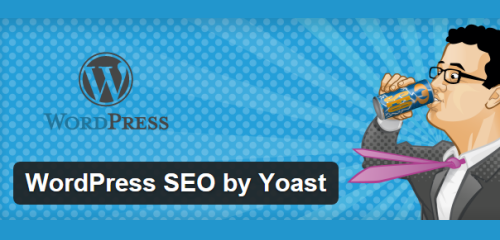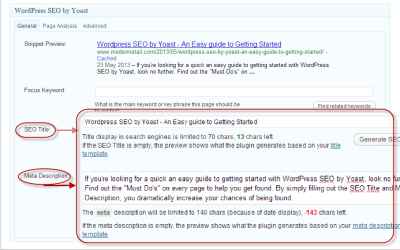Wordpress SEO by Yoast - An Easy Guide to Getting Started
22nd May 2013 by

So you’ve spent all this money on a beautiful website, but what good is it if you’re not getting found? Search Engine Optimization (SEO) has always been this mystical science to me – and I’m certain that I’m not alone in this regard. Fortunately, if you have a WordPress site, you are one step ahead because WordPress is known for being a leading Content Management System (CMS) when it comes to SEO. And there’s more good news! There are plug-ins – like WordPress SEO by Yoast – that make it even better!
We set up our WordPress clients with the WordPress SEO by Yoast plug-in as we’ve found it to be very effective. If you're looking for the technical how to get started, benefits and so on, read this great tutorial by Yoast, WordPress SEO-The Definitive Guide To Higher Rankings For WordPress Sites.
For a quick, down and dirty, what you need to do when working with SEO by Yoast, read on.
Yoast Musts:
If you’re using the Yoast plug-in, there are a few things that are a “must” on your list of things to do:
SEO Title:
This is the most important area to complete. While Yoast’s Snippet Preview will generate a title for you if you don’t have one (based on your title template), it may not be the title that boosts your search ranking. Think carefully about your word choice as this is not only the first thing people see in the search results, but it’s one of the most significant areas that the search engines use in their secret "searching formula." Use the most important words first as that’s where more of the weight is put as well as what people see first.
A few notes about the title:
-
- The title display in search engines is limited to 70 characters. The preview will show you what the SEO Title will look like as well as how many characters you have left. You can type a title that’s longer, and while the words may be searched, the rest of the title will not show on the search.
- The title should always contain your brand, typically at the end, which will help people recognize you.
- It should always contain the most important keyword(s) for your post or page – preferably at the beginning of the title.
- And of course, the title should be interesting enough that people will click on it.

Meta Description:
The meta description is also a crucial piece to fill out if you want to be found by search engines. This description is the summary of what your page or post is about and is limited to 140 characters. Again, you can write as much as you want, but the first 140 characters should be the most meaningful. You’ll see when you run a search that key words in the meta description (and title) are bolded, so it’s important to include keywords that people will search for.
Some people think that the meta description has to be the opening sentence(s) of your page or blog (okay, that was me at one point), but that's not the case. Often the opening is just an introduction and doesn't even contain your key ideas. So, remember to use words that people will search for and keep the most important content in that first 140 characters.
Optional:
Focus Keyword:
We usually let our clients know that this area is optional. Filling in the keyword or phrase will trigger the Page Analysis in the 2nd tab. The analysis lets you know if you’re using your keywords and phrases appropriately throughout your document and if you’ve done what you can to help your SEO efforts.
Again, there is so much more to SEO and Yoast's plug-in, but this post is strictly to let you know what you need to know to get started with WordPress SEO by Yoast. For detailed information on how to set up your templates and how to optimize each of the areas, read more.
If you do nothing else, be sure to complete your SEO Title and Meta Description with meaningful content. It will boost your chances of getting found by leaps and bounds.

